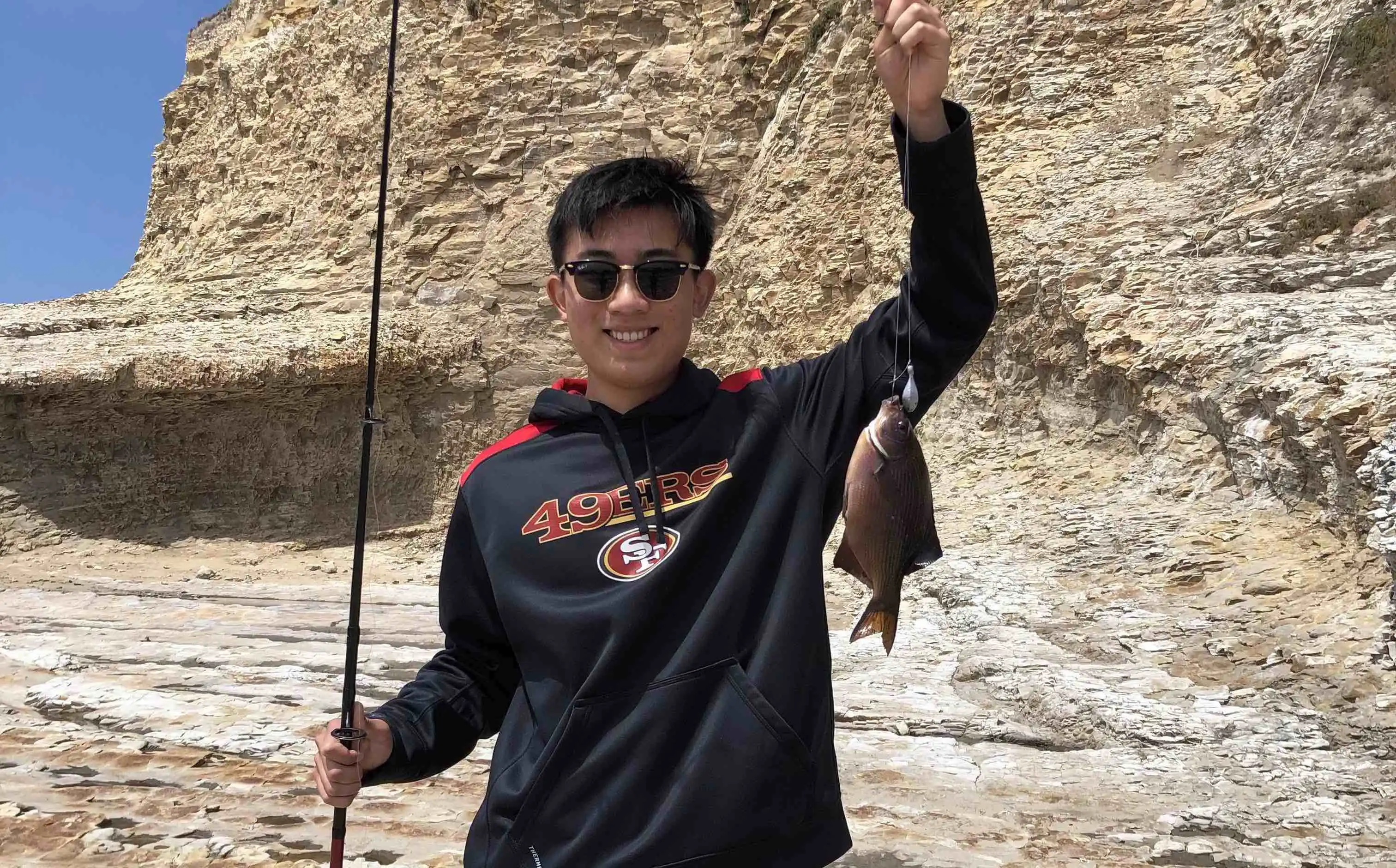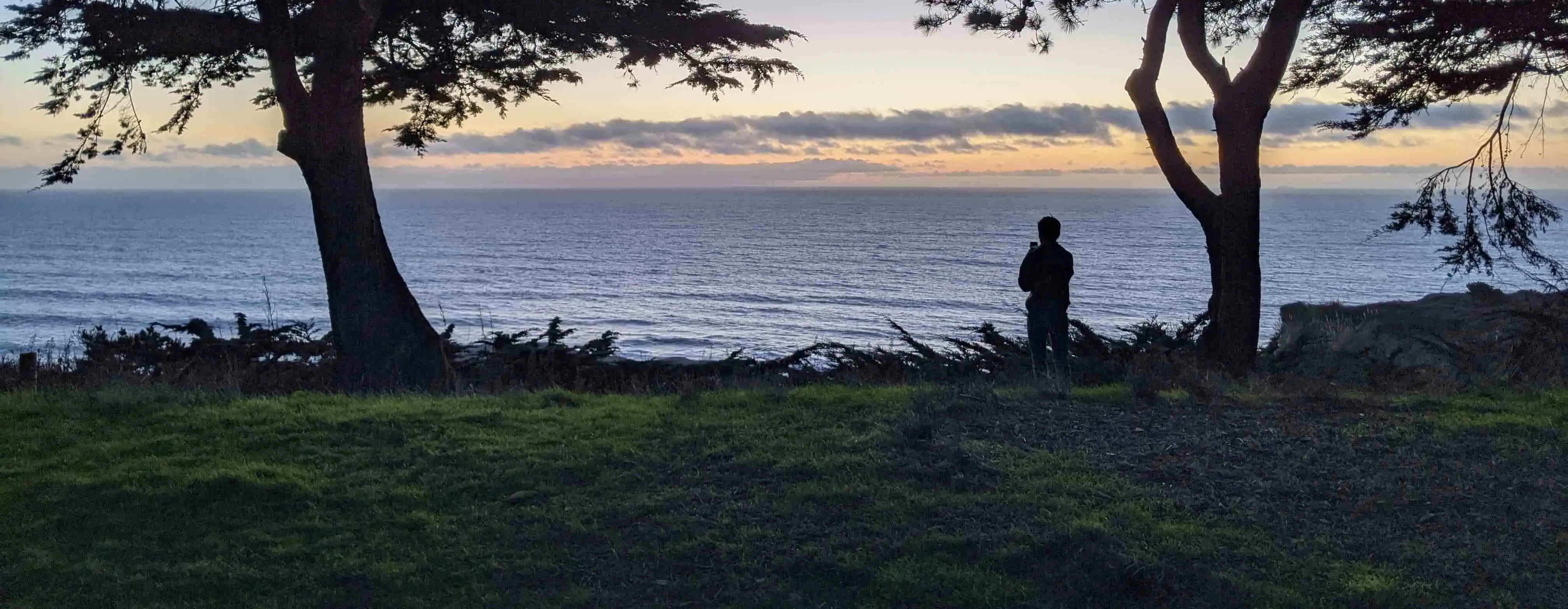Fishing the Santa Cruz Cliffs
Between Ano Nuevo State Park and Santa Cruz, a few parks allow for coastal access to a few cliffs that tower over the ocean, where the brave can drop their lines into fairly deep water with just a short cast. A few locations let you get a bit closer to the water - try and scout these out on Google Maps beforehand.
About this Stretch of Coast
Always keep your eyes on the ocean! Like the San Mateo Rocks, this section of coast can have some big waves, and people foraging and fishing the coast here have been swept into the water by rogue waves. Always check the wave forecast, and be safe. In addition, many of the rocks here can be quite slippery, so take your time when climbing these rocks to get to fishing spots.
In general, this stretch of coastline provides a nice mix of rocky and sandy-shore species. I’ve caught many jacksmelt fishing the top of water column around here - they can be a lot of fun on light line, with strips of squid or small lures. In the middle of water column, perch are quite common, especially when fishing with shrimp. Fishing deeper in the water, rockfish, cabezon, and lingcod can be caught in the rockier areas, but they tend to be somewhat sparse - my catch rates have never been particularly high. However, these fish tend to be larger than their cousins to the north in San Mateo. I’ve also caught a fair number of greenling here, relative to other rocky areas in the Bay Area. If you can get a good cast (and the regulars here often use 10+ ft rods for the extra distance), you can get a bit closer to the kelp beds offshore, which ups the catch rates. The rocks here are also particularly snaggy, for whatever reason, so bring plenty of spare tackle. In sandier areas, I’d assume there would be flatfish and croaker, but I haven’t caught any myself.
Be careful when fishing these cliffs - many are quickly eroding, and a single false step could end up with you plummeting into the ocean. In addition, the waves here tend to be somewhat larger compared to the coastline north and south of this stretch, so if you find a spot closer to the water use extra caution. There can also be a decent number of surfers near the beaches, who can be somewhat confrontational to nearby fishermen (from personal experience).

Notes
Some of these spots have been hit quite hard in recent years, and as a result fish sizes as well as catch rates have gone down significantly. Do your part for future generations, and only take home the fish you’ll actually use and eat yourself.
Most of the rockfish I’ve caught here are black-and-yellow rockfish, similar to other rocky-shore fishing spots in the rest of the state. If you intend on keeping the fish you catch, keep in mind that this particular species of rockfish are classified as high in methylmercury and PCBs, and you should limit your consumption if possible.
Check out my Bay Area rockfish fishing guide.
Recommended Gear
Berkley Gulp Sandworms
Berkley Bonefish Ribbed Swimbait
Keitech Swimbait
When fishing the rocks, there is always a surprising amount of current, so you’ll need some heavy weights. I usually use anywhere from half an ounce to four ounces for my rigs. You’ll also snag and break off a lot, so make sure to bring a lot of spares. I’ve listed the weights I use below, in order of preference.
Cloth Bags
Ultra Steel Bullet Weights, 3/4 ounce
Lead Sinkers, 2 ounces
Some of Our Adventures






